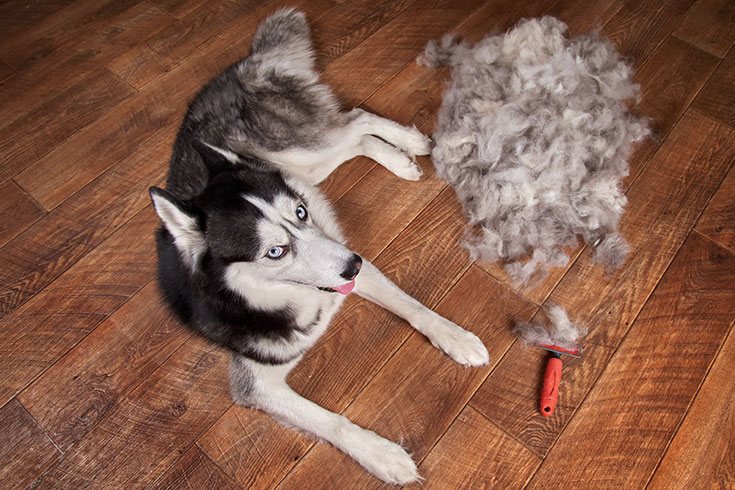Oil spill clean-ups could get hairier
Oil spill disasters on land cause long-term damage for communities and the natural environment, polluting soils and sediments and contaminating groundwater.
Current methods using synthetic sorbent materials can be effective for cleaning up oil spills, but these materials are often expensive and generate large volumes of non-biodegradable plastic wastes. Now the first comparison of natural-origin sorbent materials for land-based oil spills, including peat moss, recycled human hair, and dog fur, shows that sustainable, cheaper and biodegradable options can be developed.

"Dog fur in particular was surprisingly good at oil spill clean-up, and felted mats from human hair and fur were very easy to apply and remove from the spills,” said the lead researcher into the first comparison of natural-origin sorbent materials for land-based oil spills (Image: 123rf)
The University of Technology Sydney (UTS) project found that dog fur and human hair products – recycled from salon wastes and dog groomers – can be just as good as synthetic fabrics at cleaning up crude oil spills on hard land surfaces like highway roads, pavement, and sealed concrete floors. Polypropylene, a plastic, is a widely-used fabric used to clean up oil spills in aquatic environments.
"Dog fur in particular was surprisingly good at oil spill clean-up, and felted mats from human hair and fur were very easy to apply and remove from the spills,” said the lead author of the study, UTS Environmental Scientist Dr Megan Murray, said. Murray investigates environmentally-friendly solutions for contamination and leads The Phyto Lab research group at UTS School of Life Sciences.
"This is a very exciting finding for land managers who respond to spilled oil from trucks, storage tanks, or leaking oil pipelines. All of these land scenarios can be treated effectively with sustainable-origin sorbents," she said.
The sorbents tested included two commercially-available products, propylene and loose peat moss, as well as sustainable-origin prototypes, including felted mats made of dog fur and human hair. Prototype oil-spill sorbent booms filled with dog fur and human hair were also tested. Crude oil was used to replicate an oil spill.
The research team simulated three types of land surfaces; non-porous hard surfaces, semi-porous surfaces, and sand, to recreate common oil-spill scenarios.
"We found that loose peat moss is not as effective at cleaning up oil spills on land compared to dog fur and hair products, and it is not useful at all for sandy environments," explained Murray.
"Based on this research, we recommend peat moss is no longer used for this purpose. Given that peat moss is a limited resource and harvesting it requires degrading wetland ecosystems, we think this is a very important finding."
The research concluded that, for now, sandy environments like coastal beaches can still benefit from the use of polypropylene sorbents, but further exploration of sustainable-origin sorbents is planned.
The researchers say that future applications from the research include investigating felted mats of sustainable-origin sorbents for river-bank stabilisation, as well as the removal of pollutants from flowing polluted waters, similar to existing membrane technology.
The results of the study are published in Environments